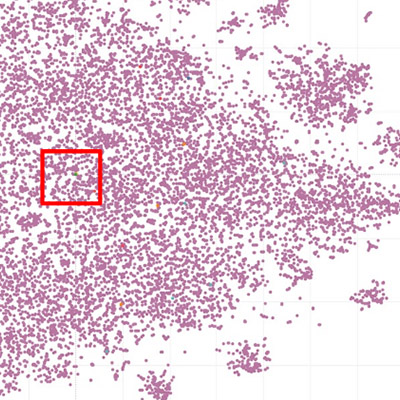Typicality
About the project
Status: archive
Project team: Mark Algee-Hewitt, Erik Fredner;
Start date: Sep 1, 2018
End date: Sep 1, 2020
Last updated: Jan 1, 2023
Literary Lab talks at DH 2020
Mar 6, 2020
Presentation on “Typicality”
Dec 5, 2018
Presentation on “Typicality”
Feb 27, 2018

Do literary critics know what a typical novel is like? Frederic Jameson all but claims to when he describes an “unexpected...modification” in a character’s life as something that would “normally generate a properly Utopian narrative”. Critics may reject the idea of any given novel’s typicality, but paradoxically rely on a conception of what the typical novel does as a heuristic to make aesthetic judgments. We know when our expectations have been undercut, but we focus on what that undercutting does, rather than the origins of the expectation. This project shifts the critical focus from the former to the latter.
Where Víktor Shklovsky looks for a type of the novel—finding it in Tristram Shandy, the “most typical novel of world literature”—we seek typicality in the no less exaggerated form of the average. In an essay on Josephine Miles’s early distant reading, Brad Pasanek quotes an objection made by a reviewer to Miles’s results that captures the tension between the critical and the computational senses of typicality: “‘If Quarles is “most typical,” in any way at all, of this set of poets,’ which includes Donne, John Milton, and John Dryden, ‘I am immediately convinced that typicality is not a fruitful thing to investigate’”. We argue that reinvigorating the discourse of typicality through operationalization as Miles did forces a necessary confrontation between its meanings in quantitative and qualitative discourse.
This project developed a series of experimental approaches to the question of literary typicality. What, for instance, is the typical novel about? Using the Gale Corpus of American Fiction, which contains more than 18,000 texts published in the United States between 1774 and 1920, we analyze its 2,000 most frequent nouns as a proxy for the subjects of the novels. We then calculate the variance of each word in both concurrent and transhistorical groups to study how centrally embedded each individual text is within its literary field. We experiment with different measures of similarity—Euclidean distance, cosine similarity, and Kullback-Leibler divergence—to analyze which novels and which portions of novels in an individual author’s corpus are least unlike the others in the set. This analysis challenges the critical shortcut, widespread at least since Auerbach’s Mimesis, of identifying a given passage as “typical” of a given author. Finally, we use t-stochastic neighbor embedding to plot the relationships among all of the novels in the corpus, and analyze those at the center of the distribution, focusing on one novel that is more centrally located than any other. The same experiments are repeated using verbs: What does the typical U.S. novel do?
Through each of these experiments, we offer provisional operationalizations as provocations to think through the problems posed by literary typicality. If readers bring expectations to novels, those expectations come from a range of cultural forces, most salient of which is the novel itself. Are those expectations justified by the predominant features of other novels? Or, to tweak Shklovsky’s formulation, how typical is the average novel?